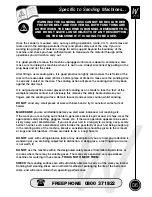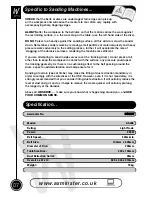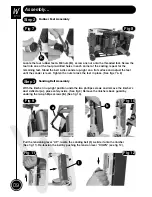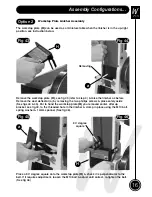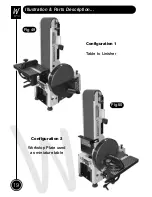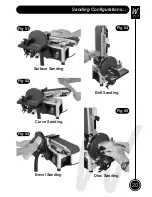
07
W H I T E
A X M I N S T E R
W
www.axminster.co.uk
Specific to Sanding Machines...
CHECK
that the belts or discs are undamaged; torn edges can pick up
on the workpiece and will cause the medium to tear, often very rapidly with
accompanying sharp flapping edges.
ALWAYS
offer the workpiece to the belt/disc so that the motion carries the work against
the restraining surface, (i.e. the work stop or the table, (use the left hand side of the disc).
DO NOT
press too heavily against the sanding surface, all this will do is slow the sander
down. Remember, sanders work by removing small particles of material quickly and heavy
pressure works adversely to the cutting process, further, it will accelerate the rate of
‘clogging’ of the abrasive surfaces, rendering the machine less efficient.
If you are attempting to sand inside curves (over the ‘tracking drum’) do not press at all,
other than to keep the workpiece in contact with the surface, any pressure could upset
the tracking geometry. As there is no cushioning effect to the belt passing around the
drum, expect an added vibration and compensate for it.
Sanding of certain types of timber may make the fitting of dust extraction mandatory in
order to comply with the directives of the HSE. However, even if it is not mandatory, it is
strongly recommended that you consider fitting dust extraction. It will certainly reduce the
level of dust and grit, and as it helps to remove the waste quicker will certainly prolong
the longevity of the abrasive.
Above all,
OBSERVE….
make sure you know what is happening around you, and
USE
YOUR COMMON SENSE.
Specification...
Axminster No.
340297
Model:
Rating:
Power:
Belt Speed:
Belt Size:
Diameter of Disc:
Table Size Disc:
Dust Extraction Outlet:
Overall L x W x H:
Weight:
AS408
Light Trade
250W
520m/min
100mm x 945mm
200mm
220 x 150mm
35mm
500 x 440 x 370mm
18kg







